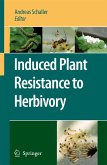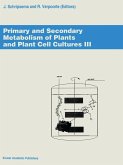Flowering plants dominate much of the Earth's surface and yet, as sessile organisms, they must constantly resist attack by numerous voracious herbivores. Survival in the face of an abundance of insect predators relies on sophisticated resistance systems allowing plants to escape from herbivory in time or in space, to confront herbivores directly, or to fight them indirectly by remarkable collaborations with other species. Until recently, plant resistance was believed to be constitutive, i.e. ever-present and independent from herbivore attack. However, plants were discovered to respond actively to herbivory through the mobilization of specific defenses, and this discovery opened an exciting new field of research.
This book provides a thorough overview of the anatomical, chemical, and developmental features contributing to plant defense, with particular emphasis on plant responses that are induced by wounding or herbivore attack.
Hinweis: Dieser Artikel kann nur an eine deutsche Lieferadresse ausgeliefert werden.
This book provides a thorough overview of the anatomical, chemical, and developmental features contributing to plant defense, with particular emphasis on plant responses that are induced by wounding or herbivore attack.
Hinweis: Dieser Artikel kann nur an eine deutsche Lieferadresse ausgeliefert werden.
From the reviews: "'Induced Plant Resistance to Herbivory' edited by Andreas Schaller contains three major sections comprising a total of 21 chapters. ... A broader and more complete overview of induced plant defences against herbivores would have made the book more interesting for a broader reader-ship. ... every chapter gives a detailed insight into a fascinating topic and is certainly worth to read for those who are working in the area and are in search for a rapid update on their own or a closely related research topic." (Martin Heil, Basic and Applied Ecology, Vol. 10, 2009)








